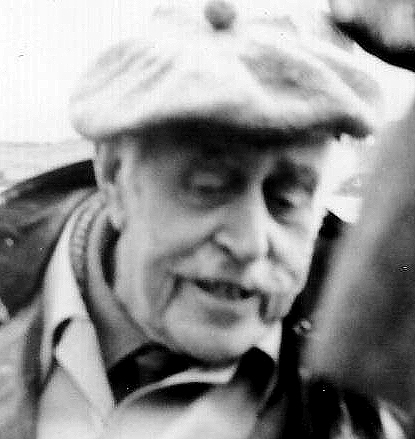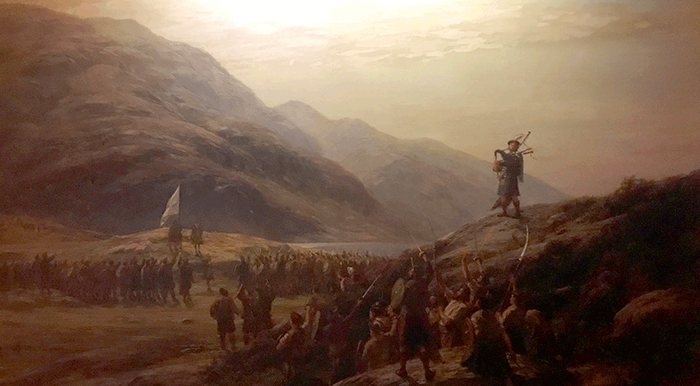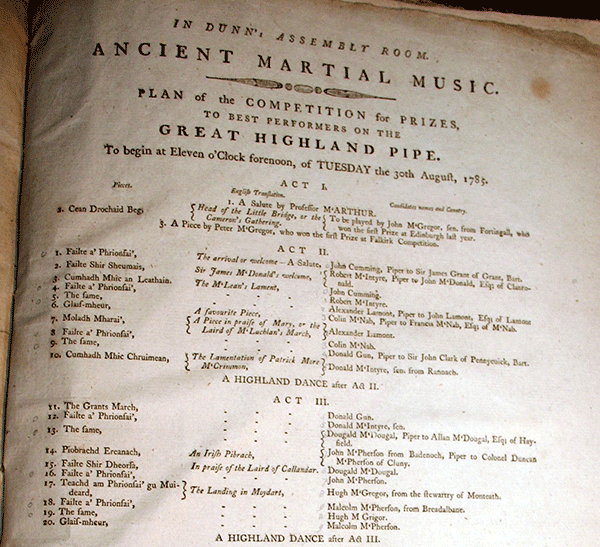
For many decades the elegant prose of writer Seton Gordon graced the pages of the London Times discoursing as he would on piping, folklore and the natural world of the Highlands of Scotland. Here we reproduce the first part of an article he wrote in the 1960s. It shows that the MacCrimmons were not the only great piping family of legend….
THE world has heard of the MacCrimmons of Skye and of the MacKarters or Macarthurs of Skye and Mull. Were there pipers in the Highlands of the mainland of Scotland who were almost their equal? Tantalisingly little is known for certain about them, but it would seem that in Perthshire was a line of very distinguished pipers – the MacGregors. Glen Lyon was their home, and they were named Clann an Sgeulaiche, Children or Race of the Storyteller.
In this gifted family were found not only pipers but raconteurs, fiddlers, and bards. At what period they became hereditary pipers to the chiefs of MacGregor is not known. One of them, probably Donnchadh Mór or Big Duncan, composed that fine piobaireachd the Rout of Glenfruin to commemorate the fight when the MacGregors inflicted great slaughter on the Colquhouns of Luss.

He, at all events, led the clan to battle on that occasion, when the victory of the MacGregors brought disaster closely following and a temporary loss of their very name. The grandson of Donnchadh Mór, Alpin by name, played to Rob Roy as he was dying at Balquhidder in 1734.
The MacGregors, like the MacCrimmons, had their college of piping. It was in Glen Lyon, at a place named Druimcharaidh or Drumcharry. There is a tradition that each year they sent their best pupil for a finishing course at Borreraig, the MacCrlmmons’ college in Skye, thus apparently acknowledging them as supreme instructors.
When we come to the beginning of the eighteenth century, we find clearer records of the family. Patrick was piper to the Duke of Atholl in 1706, and Ewen was piper to Lord Lovat of the ’45 and composer of Lord Lovat’s Lament.
About this time, John MacGregor joined Prince Charles Edward at Glenfinnan and later became his personal attendant and piper, being wounded in the thigh at Culloden. Another piper of the clan was James. He was a piper in MacGregor of Glengyle’s regiment, was captured at Carlisle, and sentenced to death, a sentence that was commuted to transportation.

At the first important piping competition of which we have any record - that held at the Falkirk Tryst In 1781 – Patrick MacGregor won the first prize for piobalreachd and John MacGregor, then 73 years old, was third.
Patrick was without almost the whole of the third finger of his upper hand on the chanter, and he used his little finger instead. He was known, therefore, as Padrulg na Corralg, Patrick of the Finger. A contemporary, or almost contemporary, record tells us how this important competition was conducted.

When his turn came, each piper was brought by a private door to a small court below the room in which the judges sat, and played his tunes, invisible to them.
Each piper was required to play four piobaireachd, and this must have taken him more than an hour – a testing performance indeed. The first prize was 30 merks Scots and a set of bagpipes by Huth Robertson of Edinburgh.
It is not certain that Patrick MacGregor was one of the Clann an Sgeulaiche, but it is definitely known that John, the winner of the third prize, was of this family. At the competition held two years later, he, as piper to the Highland Society of London, opened the proceedings by playing as an exhibition piobaireachd, Clanranald’s March.
It is remarkable how often the name MacGregor appears in records of these early competitions: the family evidently transmitted their skill from one generation to the next.
- To be continued.
[wds id=”11″]















